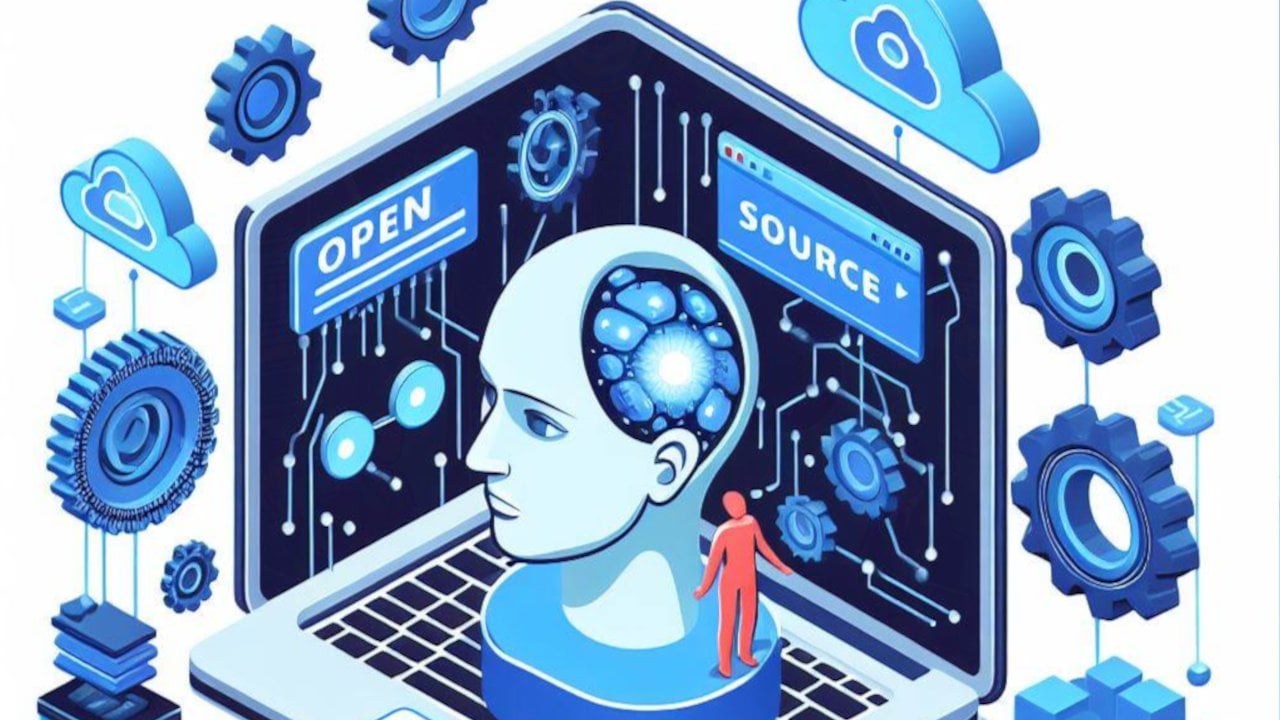Understanding AI's Learning Process: Toward Responsible AI Development And Deployment

Table of Contents
The Mechanics of AI Learning
The remarkable capabilities of AI stem from its ability to learn from data. This learning process, however, is multifaceted and relies on various techniques. Understanding these techniques is paramount to developing responsible AI.
Supervised Learning
In supervised learning, an AI model learns from labeled data. This means the data is already tagged with the correct answers or classifications. The algorithm identifies patterns and relationships between the input data and the corresponding outputs. Once trained, the model can predict outcomes for new, unseen data.
- Examples: Image recognition (classifying images as cats or dogs), spam filtering (identifying spam emails), medical diagnosis (predicting diseases based on patient data).
- Challenges: Supervised learning relies heavily on the quality and quantity of the labeled data. Insufficient data or inaccurate labels can lead to poor model performance. Furthermore, biases present in the training data will inevitably be reflected in the model's predictions, leading to unfair or discriminatory outcomes. This necessitates careful data curation and bias mitigation strategies.
Unsupervised Learning
Unlike supervised learning, unsupervised learning deals with unlabeled data. The AI model's task is to discover hidden patterns, structures, and relationships within the data without any predefined outputs.
- Examples: Customer segmentation (grouping customers based on purchasing behavior), anomaly detection (identifying unusual patterns in network traffic), dimensionality reduction (reducing the number of variables in a dataset while preserving important information).
- Challenges: Interpreting the patterns discovered by unsupervised learning algorithms can be complex and require advanced techniques for data visualization and analysis. The results are often less intuitive than those from supervised learning, demanding careful interpretation and validation.
Reinforcement Learning
Reinforcement learning is a more interactive approach where an AI agent learns through trial and error. The agent interacts with an environment, receives rewards for desirable actions, and penalties for undesirable ones. Through this feedback loop, the agent learns an optimal strategy to maximize its cumulative reward.
- Examples: Game playing (AlphaGo mastering Go), robotics (training robots to perform complex tasks), resource management (optimizing energy consumption in a smart grid).
- Challenges: Designing effective reward functions is crucial in reinforcement learning. Poorly designed rewards can lead the agent to exploit loopholes or achieve the reward in unintended ways. Furthermore, reinforcement learning can be computationally expensive, requiring significant computing resources and time.
Addressing Bias in AI Learning
A significant concern in AI development is the potential for bias. AI systems, being trained on data, can inherit and amplify existing societal biases, leading to unfair or discriminatory outcomes.
Identifying and Mitigating Bias
Bias can manifest in various ways, from skewed data representation to algorithmic flaws. Identifying and mitigating bias requires a multi-pronged approach.
- Strategies: Data augmentation (adding more data to balance underrepresented groups), algorithmic fairness techniques (developing algorithms that minimize bias), careful selection and preprocessing of data (removing or correcting biased data points).
- Importance: Addressing bias is not merely a technical challenge but a critical ethical imperative. Fair and equitable AI systems are crucial for building trust and avoiding harmful societal impacts.
Promoting Data Diversity and Representation
Diverse and representative datasets are essential for creating unbiased AI systems. This means ensuring that the data used to train AI models reflects the diversity of the population the system will interact with.
- Methods: Actively seeking diverse data sources, employing data collection strategies that specifically target underrepresented groups, using techniques like data resampling to balance class distributions.
- Benefits: Reduces bias, improves the accuracy and generalizability of AI models across various populations, and ensures that AI systems are fair and equitable for everyone.
Ensuring Transparency and Explainability in AI
Many AI models, especially deep learning models, are often described as "black boxes." This opaqueness makes it difficult to understand their decision-making processes, hindering trust and accountability.
The "Black Box" Problem
The lack of transparency in AI models presents significant challenges. It makes it difficult to debug errors, identify biases, and ensure accountability. This can erode public trust and hinder the adoption of AI technologies.
- Challenges: Debugging errors becomes difficult, biases are hard to identify and mitigate, and it is challenging to explain AI decisions to users.
- Solutions: Explainable AI (XAI) techniques are being developed to provide insights into how AI models arrive at their conclusions. These methods aim to make AI systems more transparent and understandable.
Building Trust through Transparency
Openness and transparency are crucial for fostering public trust and acceptance of AI. This involves not just making the data and algorithms accessible but also providing clear explanations of how the AI system works and makes decisions.
- Methods: Documentation of datasets, algorithms, and model performance, providing clear explanations of AI decision-making processes, using visualizations to help users understand AI outputs.
- Impact: Increases accountability, allows for better monitoring and auditing of AI systems, fosters public trust and acceptance.
The Ethical Implications of AI Deployment
The development and deployment of AI systems raise significant ethical questions. It is crucial to establish ethical guidelines and frameworks to guide responsible AI development.
Responsible AI Development Frameworks
Several organizations and governments are developing ethical guidelines and frameworks for AI development and deployment. These frameworks offer structured approaches to responsible AI development, guiding developers in making ethical considerations.
- Examples: OECD Principles on AI, EU AI Act, various industry-specific guidelines.
- Benefits: Provides a structured approach to responsible AI, guides developers in making ethical considerations, promotes consistency and accountability in AI development.
The Role of Human Oversight
Human oversight is crucial to ensure the ethical and responsible use of AI. Humans can provide crucial context, values, and ethical judgment to guide AI systems and address unforeseen challenges.
- Importance: Humans can identify and mitigate biases, ensure fairness and equity, and address unintended consequences.
- Methods: Human-in-the-loop systems (systems where humans are involved in the decision-making process), regular audits and evaluations of AI systems, establishment of clear lines of accountability.
Conclusion
Understanding the AI learning process is fundamental for responsible AI development and deployment. By addressing bias, promoting transparency, and adhering to ethical guidelines, we can harness the power of AI while mitigating its potential risks. The future of AI depends on our commitment to creating and deploying AI systems that are not only powerful but also ethical and beneficial to society. Continue learning about the intricacies of the AI learning process and its implications to contribute to the responsible development and implementation of this transformative technology. Let's work together to ensure a future where AI serves humanity ethically and equitably.

Featured Posts
-
 Miley Cyrus Debuut Nieuwe Single Donderdag Details Nieuw Album
May 31, 2025
Miley Cyrus Debuut Nieuwe Single Donderdag Details Nieuw Album
May 31, 2025 -
 Manitoba Wildfires Crews Fight Deadly Spreading Blazes
May 31, 2025
Manitoba Wildfires Crews Fight Deadly Spreading Blazes
May 31, 2025 -
 Rising Covid 19 Cases A New Variants Potential Impact According To Who
May 31, 2025
Rising Covid 19 Cases A New Variants Potential Impact According To Who
May 31, 2025 -
 Miley Cyrus On Her Fathers Narcissism A Difficult Family Dynamic
May 31, 2025
Miley Cyrus On Her Fathers Narcissism A Difficult Family Dynamic
May 31, 2025 -
 Rekorlar Kitabina Yeni Bir Giris Novak Djokovic In Basarisi
May 31, 2025
Rekorlar Kitabina Yeni Bir Giris Novak Djokovic In Basarisi
May 31, 2025
